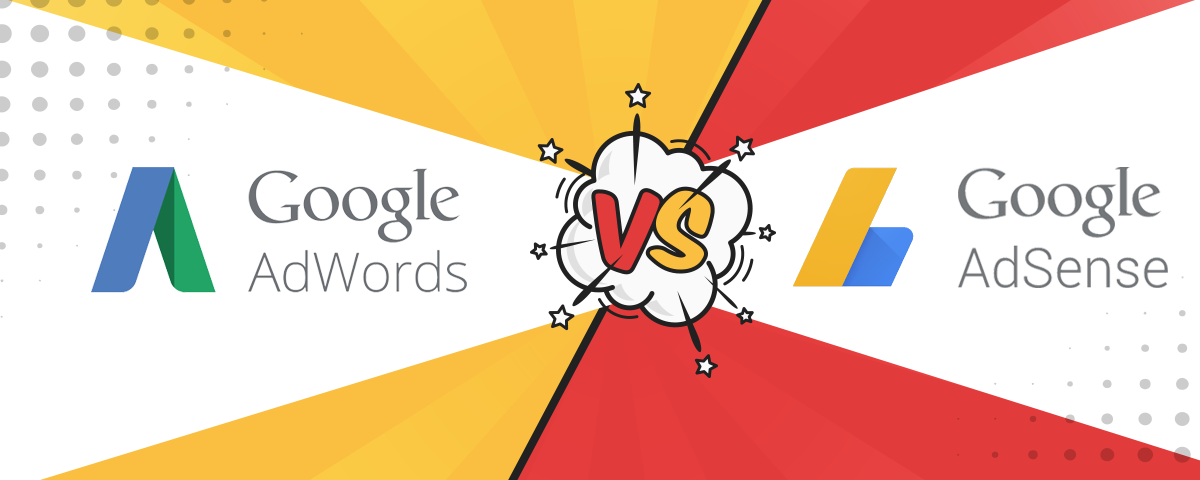In the ever-evolving landscape of online advertising, Google AdWords and AdSense stand out as two powerful tools for both advertisers and publishers. While they both serve the purpose of monetizing websites through ads, they operate on different ends of the spectrum. In this comprehensive guide, we’ll delve into the intricacies of AdWords and AdSense, exploring their differences, similarities, and how they can be leveraged together to optimize revenue streams for your website.
- Understanding Google AdWords:
- Overview of Google AdWords: Google AdWords, now known as Google Ads, is Google’s online advertising platform that allows advertisers to display their ads on Google’s search engine results pages (SERPs) and across its vast network of partner websites.
- How AdWords Works: AdWords operates on a pay-per-click (PPC) model, where advertisers bid on keywords relevant to their target audience. When users search for these keywords, ads are displayed, and advertisers pay Google a predetermined amount every time their ad is clicked.
- Targeting Options: AdWords offers various targeting options such as geographic location, demographics, interests, and device targeting, allowing advertisers to reach their desired audience effectively.
- Ad Formats: AdWords supports various ad formats including text ads, display ads, video ads, and shopping ads, providing advertisers with flexibility in their advertising campaigns.
- Exploring Google AdSense:
- Overview of Google AdSense: Google AdSense is Google’s platform for website publishers to monetize their online content by displaying relevant ads. Publishers earn revenue when visitors to their websites click on or view these ads.
- How AdSense Works: AdSense utilizes contextual targeting to display ads that are relevant to the content of the website. Advertisers bid to have their ads displayed on websites within Google’s network, and Google serves the highest-paying ads to publishers’ websites.
- Ad Formats: AdSense offers a variety of ad formats including text ads, display ads, in-feed ads, in-article ads, and matched content ads, allowing publishers to seamlessly integrate ads into their website’s layout.
- Revenue Sharing: AdSense operates on a revenue-sharing model, with publishers typically receiving a percentage of the advertising revenue generated from their website’s traffic.
- Key Differences Between AdWords and AdSense:
- Audience: AdWords targets advertisers looking to promote their products or services, while AdSense targets website publishers looking to monetize their online content.
- Role: AdWords is used by advertisers to create and manage ad campaigns, whereas AdSense is used by publishers to display ads on their websites and earn revenue.
- Revenue Model: AdWords operates on a cost-per-click (CPC) or cost-per-thousand-impressions (CPM) basis, where advertisers pay Google for ad clicks or impressions, while AdSense operates on a revenue-sharing model, where publishers earn a portion of the advertising revenue.
- Control: AdWords advertisers have control over their ad campaigns, including budget, targeting options, and ad creatives, while AdSense publishers have limited control over the ads displayed on their websites.
- Can You Use Both AdWords and AdSense on the Same Website?
- Yes, it is possible to use both AdWords and AdSense on the same website, as they serve different purposes and target different audiences.
- AdWords can be used to promote products or services relevant to your website’s audience, driving traffic and potentially increasing AdSense revenue.
- However, it’s essential to maintain a balance between ads served through AdWords and AdSense to ensure a positive user experience and avoid overwhelming visitors with too many ads.
- Strategies for Maximizing Revenue with AdWords and AdSense:
- Targeted Advertising: Use AdWords to target specific keywords related to your website’s content, driving highly relevant traffic to increase AdSense revenue.
- Optimize Ad Placement: Experiment with different ad placements and formats to maximize visibility and engagement while ensuring a positive user experience.
- Monitor Performance: Regularly analyze the performance of your ad campaigns and ad placements to identify areas for improvement and optimize revenue potential.
- Test and Iterate: Continuously test different ad creatives, targeting options, and strategies to find what works best for your website and audience.
- Stay Compliant: Adhere to Google’s advertising policies and guidelines to maintain a healthy relationship with both AdWords and AdSense platforms.
Conclusion: Google AdWords and AdSense are powerful tools for advertisers and publishers alike, offering unique opportunities to monetize websites and reach target audiences effectively. By understanding the differences between AdWords and AdSense and leveraging them strategically, website owners can maximize their revenue potential while providing value to their audience. Whether you’re looking to promote your products or services or monetize your online content, integrating AdWords and AdSense into your digital strategy can help you achieve your goals and drive success in the competitive world of online advertising.
